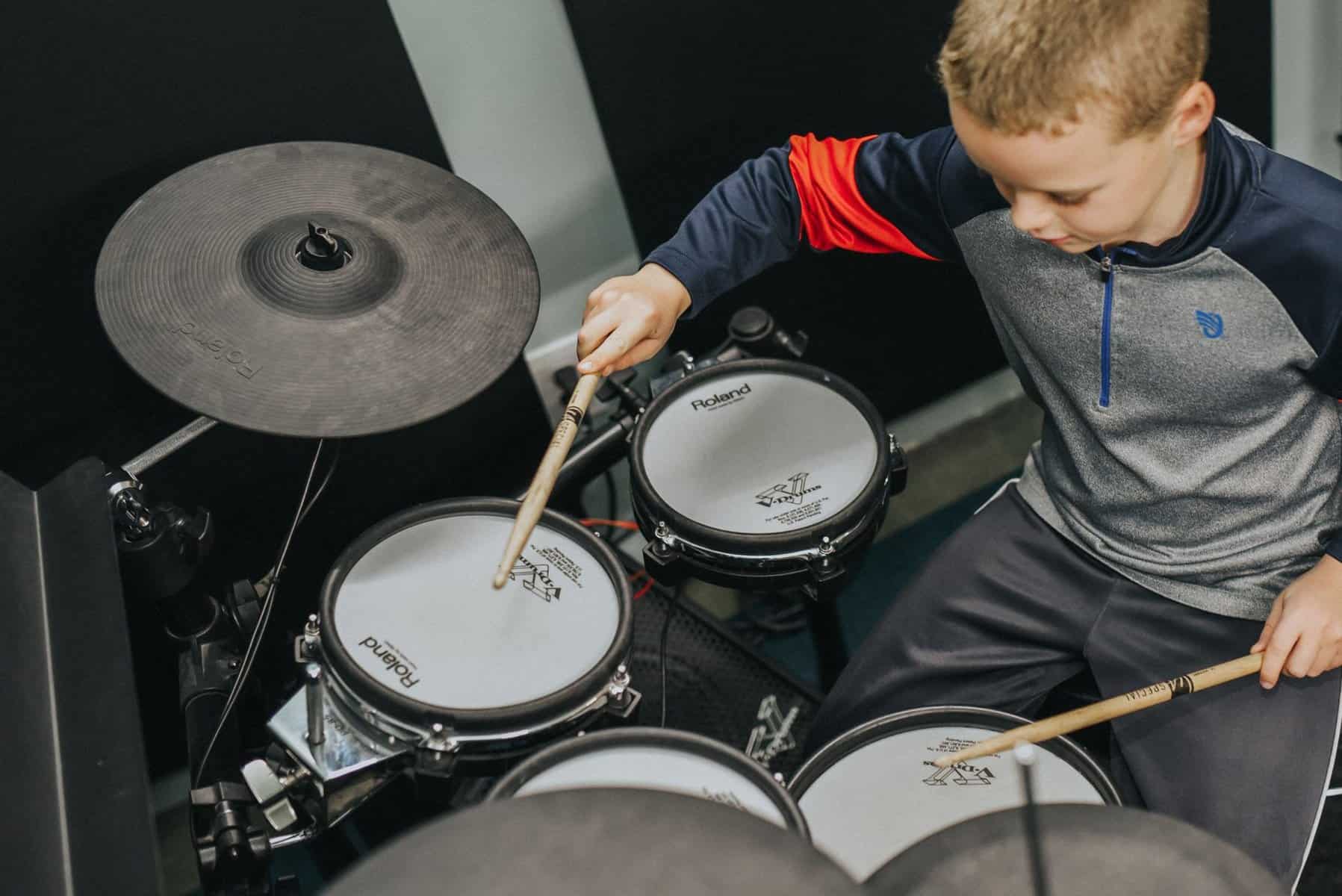Drumming 101: Tips and Tricks for Rapid Improvement on the Kit
Drumming is a powerful and dynamic musical instrument that has been a part of human culture for centuries. From ancient tribal rituals to modern rock concerts, the drum has always played a vital role in creating rhythm and driving the beat. Learning to play the drums can be an incredibly rewarding experience, but it requires dedication and practice.
In this article, we will explore the basics of drumming, including how to choose the right drum kit, essential techniques for beginners, improving timing and coordination, mastering different drumming styles, effective practice methods, understanding drum notation, creating your own grooves, playing with a band, and maintaining your drum kit.
Choosing Your Drum Kit
When it comes to choosing a drum kit, there are several factors to consider. First and foremost, you need to determine your budget. Drum kits can range from affordable beginner sets to high-end professional kits. It’s important to find a balance between quality and price that suits your needs.
Next, consider the style of music you want to play. Different genres require different types of drums and cymbals. For example, if you’re interested in playing jazz, you may want a smaller kit with lighter cymbals. On the other hand, if you’re into heavy metal, you’ll likely need a larger kit with heavier cymbals for a louder and more aggressive sound.
It’s also important to consider the size of the drums. Smaller drums are generally easier to transport and set up, making them ideal for gigging musicians. However, larger drums often produce a deeper and more resonant sound. Ultimately, it’s a matter of personal preference and what works best for your playing style.
Essential Techniques for Beginner Drummers
As a beginner drummer, it’s important to start with the basics. The first technique you should focus on is proper grip and stick control. Hold the sticks with a loose grip and let them rebound naturally off the drumheads. This will allow you to play with more speed and control.
Next, work on your hand technique. Practice playing single strokes, double strokes, and paradiddles (a common drum rudiment) to develop your hand speed and coordination. Start slow and gradually increase your speed as you become more comfortable.
Another essential technique for beginner drummers is the bass drum technique. The bass drum is played with a foot pedal, and it’s important to develop a strong and consistent technique. Practice playing single strokes with your foot, and gradually increase your speed and control.
Improving Your Timing
Timing is crucial in drumming. It’s what keeps the band together and creates a solid groove. To improve your timing, start by practicing with a metronome. Set the metronome to a slow tempo and play along, focusing on staying in time with the clicks.
Another helpful exercise is to play along with recorded music. Choose songs that have a steady beat and try to play along without losing time. This will help you develop a sense of timing and learn how to lock in with other musicians.
It’s also important to practice playing different subdivisions of the beat. Start by playing quarter notes, then move on to eighth notes, sixteenth notes, and triplets. This will help you develop a strong internal sense of rhythm and improve your overall timing.
Developing Your Hand and Foot Coordination
Hand and foot coordination is essential for drummers, as it allows you to play complex rhythms and patterns. One exercise that can help improve coordination is playing different rhythms between your hands and feet. For example, try playing a simple beat with your hands while playing a different rhythm with your feet.
Another exercise is to practice playing different combinations of limbs. For example, try playing a simple beat with your right hand and left foot while improvising with your left hand and right foot. This will help you develop independence between your limbs and improve your overall coordination.
It’s also important to practice playing different dynamics with your hands and feet. Experiment with playing loud and soft, and try to maintain a consistent volume level between all of your limbs. This will help you develop control and precision in your playing.
Mastering Different Drumming Styles
Drumming is a versatile instrument that can be used in a wide variety of musical styles. From rock and jazz to funk and Latin, there are endless possibilities for drummers to explore. To master different drumming styles, it’s important to listen to a wide range of music and study the drumming techniques used in each genre.
One way to learn different drumming styles is to transcribe and learn drum parts from songs in different genres. This will help you understand the specific rhythms, patterns, and techniques used in each style. Practice playing along with the recordings, focusing on capturing the feel and groove of the original drummer.
It’s also helpful to take lessons or attend workshops with experienced drummers who specialize in different styles. They can provide valuable insights and guidance on how to approach each genre. Additionally, playing with other musicians who are proficient in different styles can also help you expand your musical vocabulary and improve your overall drumming skills.
Practicing Effectively
Effective practice is key to becoming a proficient drummer. It’s not just about how much time you spend practicing, but how you use that time. Here are some tips for maximizing your practice sessions:
– Set specific goals: Before each practice session, set specific goals for what you want to achieve. This could be learning a new technique, improving your speed, or mastering a difficult drum part. Having clear goals will help you stay focused and motivated.
– Break it down: If you’re working on a challenging drum part, break it down into smaller sections and practice each section separately. Once you’ve mastered each section, gradually put them together until you can play the entire part smoothly.
– Use a practice journal: Keep a practice journal to track your progress and make notes on what you need to work on. This will help you stay organized and identify areas that need improvement.
– Take breaks: It’s important to take regular breaks during practice sessions to rest your muscles and prevent fatigue. This will help you maintain focus and prevent injuries.
Understanding Drum Notation
Drum notation is a system of writing music specifically for drums. It uses a combination of standard musical notation symbols and unique drum-specific symbols to represent different drum sounds and techniques. Understanding drum notation is essential for drummers who want to read and write drum music.
The basic elements of drum notation include the staff, which consists of five horizontal lines, and the noteheads, which are placed on the lines or spaces of the staff to represent different drum sounds. Different symbols are used to indicate specific techniques, such as accents, ghost notes, and rim shots.
To learn drum notation, start by familiarizing yourself with the basic symbols and their meanings. Practice reading simple drum beats and fills written in notation, and gradually work your way up to more complex rhythms and patterns.
Writing drum music is a great way to develop your composition skills and create your own grooves. Experiment with different rhythms, accents, and techniques, and don’t be afraid to think outside the box. The more you practice reading and writing drum notation, the more comfortable you will become with it.
Creating Your Own Grooves
One of the most exciting aspects of drumming is the ability to create your own grooves. Improvisation and composition are essential skills for any drummer who wants to develop their own unique style. Here are some tips for creating your own grooves:
– Experiment with different rhythms: Try playing different combinations of notes and rests to create interesting rhythms. Don’t be afraid to experiment and think outside the box.
– Play with dynamics: Experiment with playing loud and soft to create contrast and add depth to your grooves. Use accents and ghost notes to emphasize certain beats or create subtle variations.
– Incorporate different techniques: Explore different drumming techniques, such as rolls, flams, and drags, and incorporate them into your grooves. This will help you create more complex and dynamic rhythms.
– Listen to other drummers: Study the grooves of your favorite drummers and try to incorporate elements of their style into your own playing. This will help you develop your own unique voice as a drummer.
Playing with a Band
Playing with a band is a completely different experience than practicing alone. It requires communication, collaboration, and the ability to listen and respond to other musicians. Here are some tips for drumming in a group setting:
– Listen to the other musicians: Pay attention to what the other musicians are playing and adjust your playing accordingly. This will help you stay in sync with the rest of the band and create a tight groove.
– Communicate with the other musicians: Use visual cues, such as eye contact or hand signals, to communicate with the other musicians during a performance. This can help you make quick changes or transitions in the music.
– Support the song: As a drummer, your primary role is to support the song and provide a solid foundation for the other musicians. Focus on playing in time and maintaining a steady groove that complements the music.
– Be adaptable: Be prepared to adapt your playing to different musical styles and genres. Each song may require a different approach, so be flexible and open-minded.
Maintaining Your Drum Kit
Taking care of your drum kit is essential for keeping it in top condition and ensuring it sounds its best. Here are some tips for maintaining your drums:
– Clean your drums regularly: Wipe down your drums with a soft cloth after each use to remove dust and dirt. Avoid using harsh chemicals or abrasive materials that could damage the finish.
– Replace drumheads when necessary: Drumheads wear out over time and need to be replaced periodically. Keep an eye out for signs of wear, such as dents, tears, or a dull sound, and replace the drumheads as needed.
– Tune your drums regularly: Regularly tuning your drums will help them sound their best and maintain their pitch. Experiment with different tensions and find the tuning that works best for your playing style.
– Store your drums properly: When not in use, store your drums in a cool, dry place away from direct sunlight and extreme temperatures. This will help prevent warping or damage to the drums.
Learning to play the drums is a journey that requires dedication, practice, and a love for rhythm. By choosing the right drum kit, mastering essential techniques, improving timing and coordination, playing with a band, and maintaining your drum kit, you can become a skilled and versatile drummer.
Remember to stay patient and enjoy the process of learning and improving. With time and practice, you’ll be able to create powerful rhythms and make music that moves people.
Originally posted 2024-02-29 03:26:09.



